


|
Xi'an Taijin Industrial Electrochemical Technology Co., LTD.
|
Gold Index: 122077
| Price: | 100.0 USD |
| Payment Terms: | T/T,L/C,WU,Paypal |
| Place of Origin: | Shaanxi, China (Mainland) |
|
|
|
| Add to My Favorites | |
| HiSupplier Escrow |
Titanium Electrodes Used in Electrocatalytic Oxidation Technology for Industrial Wastewater Treatment
With the development of industry, organic wastewater discharge is increasing, especially high concentration organic wastewater in the fields of chemical and pharmaceutical emission. With high color and high toxicity, it contains a large number of biodegradation-resistant components. Electrocatalytic oxidation water treatment, which has been applied in hydrocarbon, alcohol, ether, phenol and other organic wastewater treatment, has many advantages: no need to add any chemicals; small size; small space occupied; and does not cause secondary pollution. The reaction of oxidation to remove organic matter mainly occurs on the anode surface (oxidation of the anode surface directly degrade the organic matter or form a strong oxidant active species called • OH on the anode surface to further oxidize and degrade the organic matter).
(1) The Composition of Refractory Industrial Wastewater
The composition of refractory industrial wastewater:
Halogen compounds, ether compounds, nitro, nitroso, azo compounds, tertiary amines and quaternary ammonium salts, organophosphorus, mercury, tin compounds, carbon heterocyclic compounds, oxygen-, nitrogen- and sulfur-heterocyclic compounds. (Toxic to organisms)
(2) Basic Principles of Electrocatalytic Oxidation Technology
The mechanism of the electrocatalytic oxidation process for organic wastewater treatment is to degrade the organic matter directly through the high potential and high catalytic activity of the anode surface or through reaction between the strong oxidants made by the anode surface (such as H2O2, • OH, ClO-, etc.) and toxic organic matter, and further degrade the toxic pollutants in wastewater.
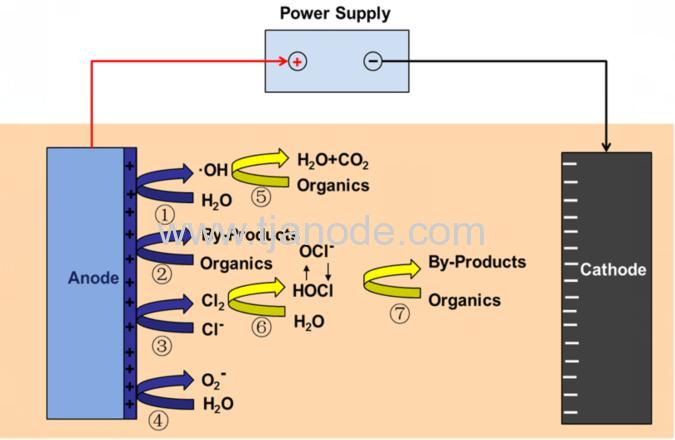
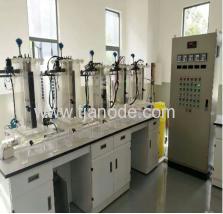
(3) Advantages of Electrocatalytic Oxidation Technology
Anode material:
1. Oxygen evolution potential ≥1.70v, strong oxidation;
2. High current efficiency;
3. Insoluble anode, corrosion-resistant.
4. Anodic matrix reusable.
5. Low cost, long life span, cost-effective.
Wastewater treatment system:
1. Degrade stubborn or toxic contaminants;
2. Fully automatic operation, simple process;
3. Suitable for high salt load;
4. No sludge, no pollution transfer;
5. Degrade COD, decolorize;
6. Inactivate and sterilize;
(4) Engineering Examples
Ⅰ. A Corporate's Waste Water Electrocatalytic Oxidation Deep Treatment Process
The enterprise using biochemical treatment to process wastewater cannot meet the standards stably. After improving its wastewater treatment process by adding electrocatalytic oxidation technology, the water reached the standards stably.
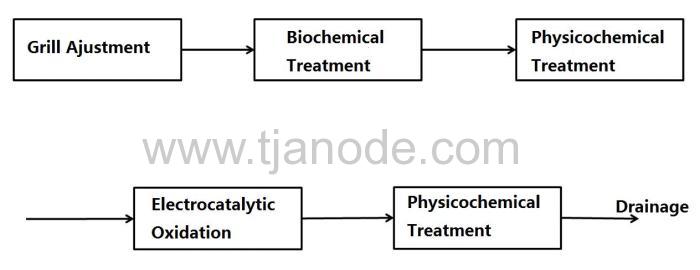
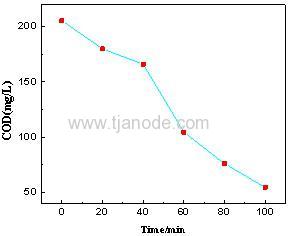
Biochemical Effluent Water Quality Electrocatalytic Oxidation Advanced Treatment
TOC:57.2 TOC:19.3
COD:205.5 COD:54.4
SS:30 SS:0.5
TN:45.5 TN:41.5
Chroma:32 Chroma:4
Ⅱ. A Chemical Plant Processes the Biodegradation-resistant Water
The waste water of the chemical plant was hard to be biodegraded, so biochemical treatment is not available. However, after using electrocatalytic oxidation method, the biodegradability of the wastewater was improved, then use biochemical treatment, the water reached the standards stably.
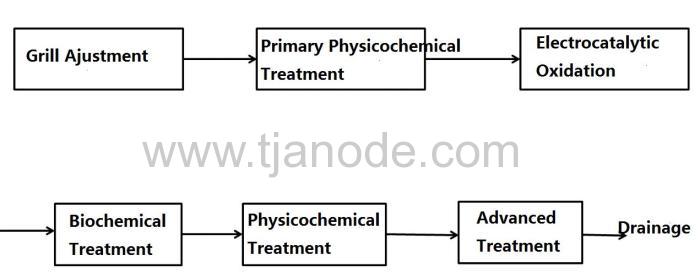
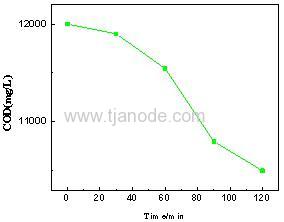
Original Water | After Electrooxidation Catalysis |
COD:12000ppm | COD:10500ppm |
BOD:1170ppm | BOD:4700ppm |
B/C Value:0.1(low biodegradability) | B/C Value:0.45(biochemical) |

Xi'an Taijin Industrial Electrochemical Technology Co., LTD. [China (Mainland)]
Business Type:Manufacturer
City: Xi'an
Province/State: Shaanxi
Country/Region: China (Mainland)






